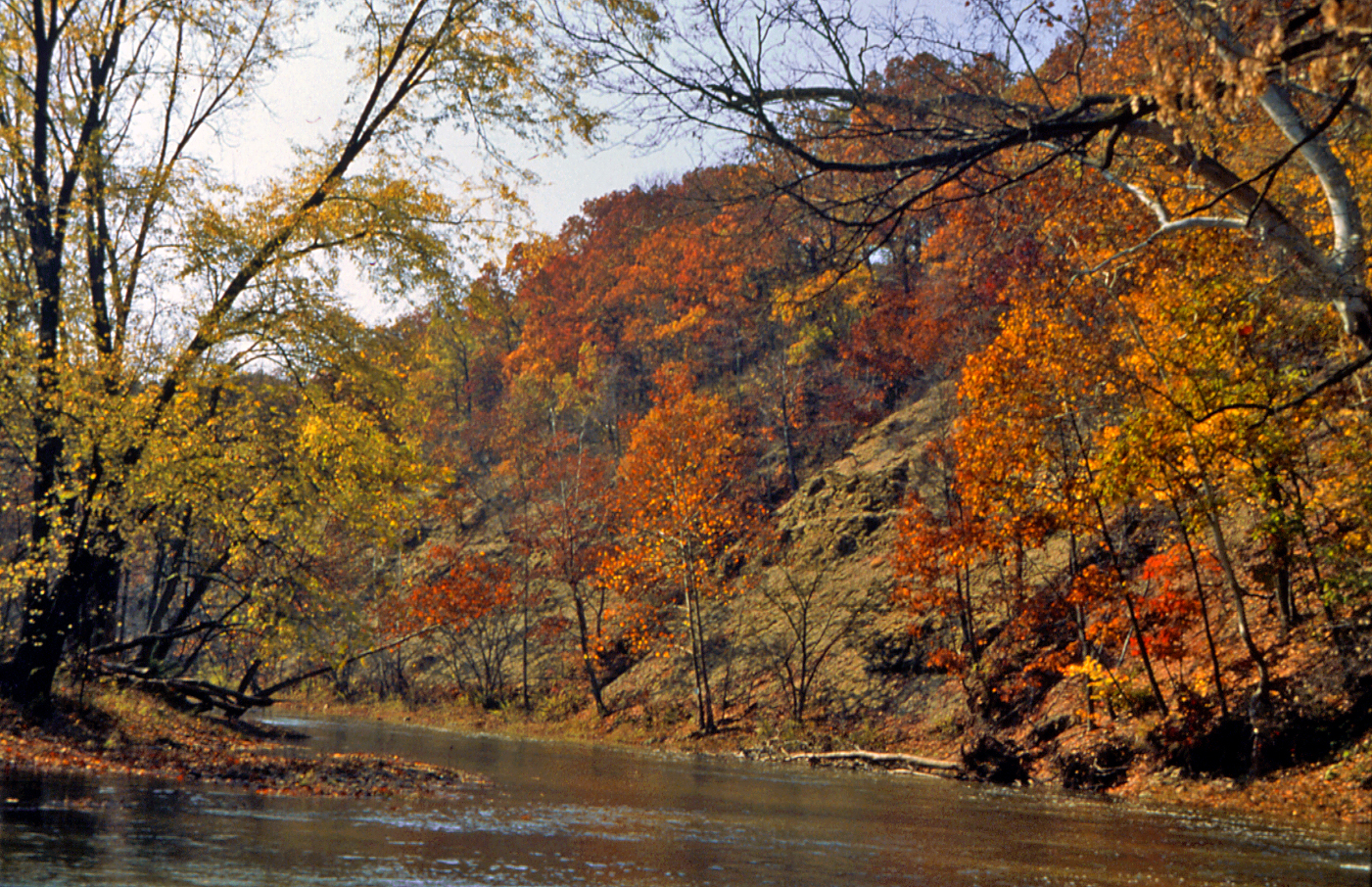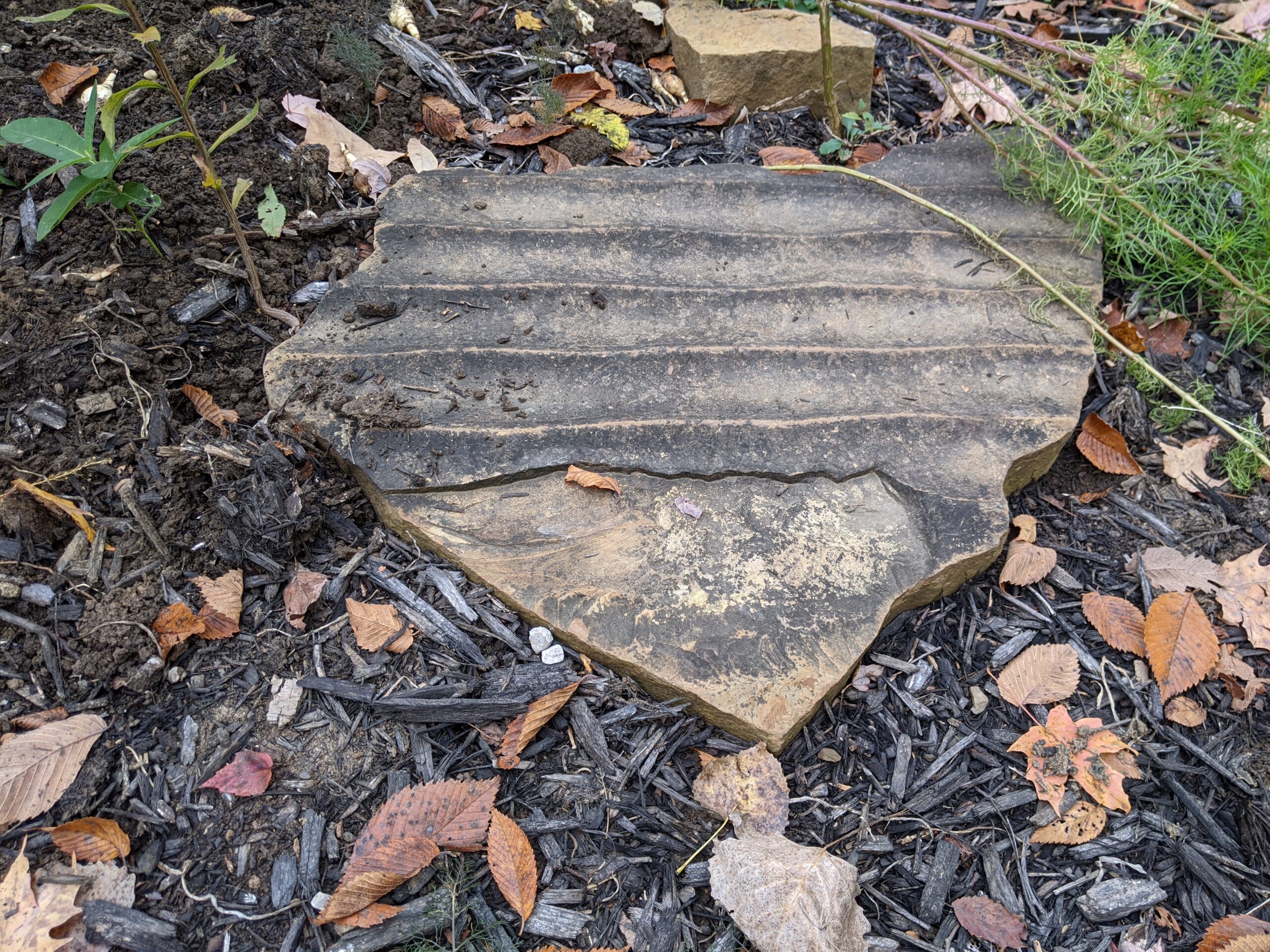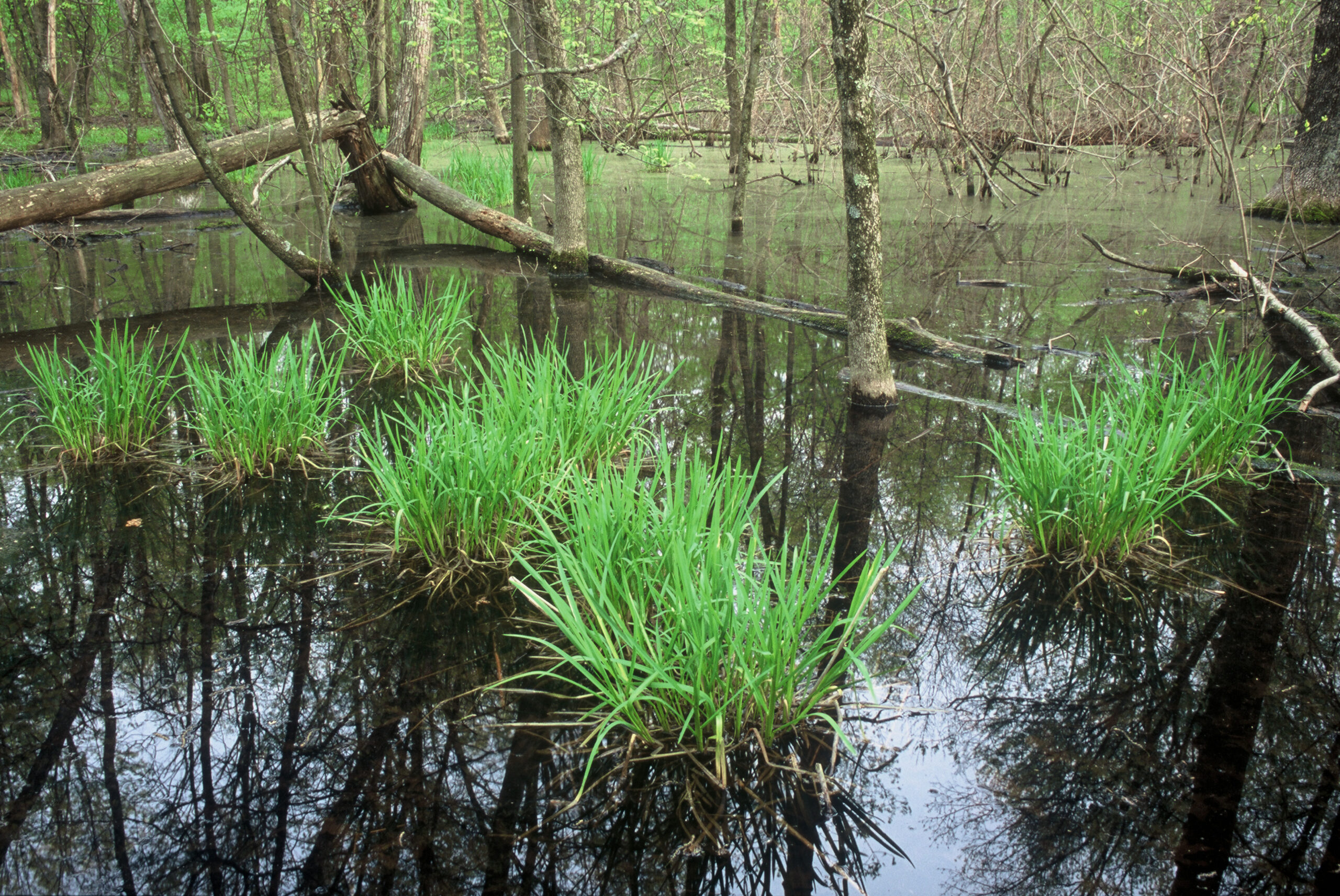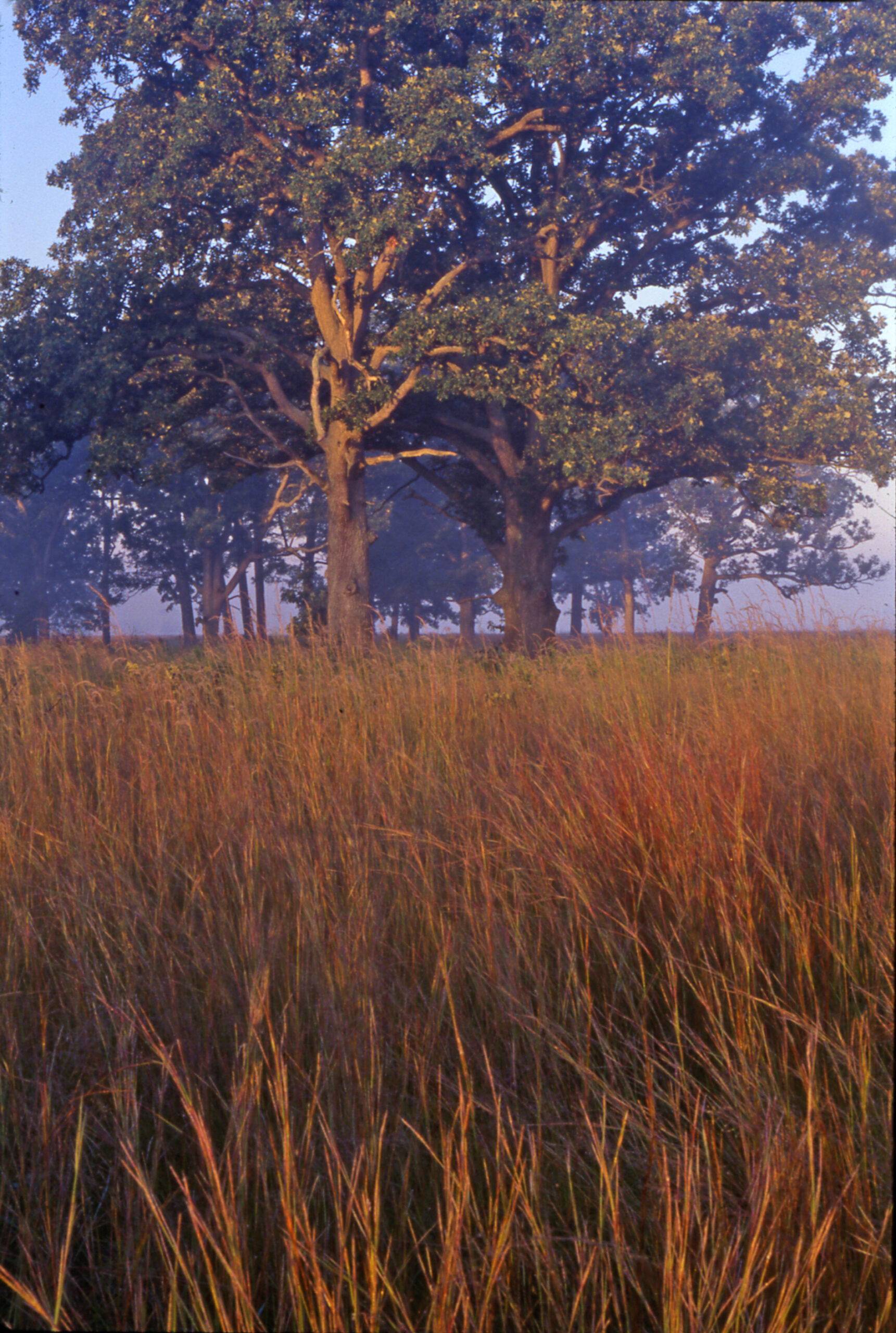
Highbanks Metro Park’s River Bluff Area on the west side of the Olentangy State Scenic River is the best place to get a look at the 100-foot tall shale bluffs towering over the river. Highbanks is named for these massive bluffs that were used as a lookout spot by ancient Indians. Park staff have recently installed three swings on top of the bluff with views of the riverside and the bluffs. The area features two short trails.
From the parking lot take the Eagle View Trail to the Sycamore Trail. You’ll walk in the floodplain through a forest of sycamore, buckeye and cottonwood trees and end up alongside the river. There are many short side trails that are accessible that will take you close to the river. You can also launch your canoe and kayak from River Bluff, located at 8400 Olentangy River Road, and get an even closer look.

Outside the Blendon Woods nature center, you’ll see a ripple rock shaped like the state of Ohio. The ripple rock is from bedrock that’s present in the park. Waves caused ripples in the sand of an ancient sea which covered central Ohio about 160 million years ago. Over the ages, the sand and ripple marks were transformed into rock. You can see an outcropping of this bedrock if you take the Ripple Rock Trail down to the creek bed. An interpretive sign and another ripple rock can be found near a rail fence on the trail. From the nature center parking lot, take the Hickory Ridge Trail to connect with the Ripple Rock Trail. Less than half a mile, the one-way gravel Ripple Rock Trail is an easy hike.

The Walter A. Tucker State Nature Preserve at Blacklick Woods Metro Park is one of 138 preserves in Ohio: This 55-acre preserve honors Walter A. Tucker, one of the founding directors of Metro Parks and one of the individuals who helped establish the state nature preserve system. A designated National Natural Landmark, the beech-maple forest in this preserve is considered to be among the least disturbed in central Ohio. As you walk the trails amid the beech and sugar maples, you might spy a fox sizing up a meadow vole or watch a white-tailed deer browsing before sundown.
Ohio State Nature Preserves are dedicated sites that are restricted in how the land can be used, to make sure that they are preserved so its natural conditions remain. These diverse and beautiful areas protect a variety of habitats, such as wetlands and old growth woods as well as geologic features and endangered species.

The W. Pearl King Prairie Savanna is the best example of an oak savanna habitat left in the Darby Plains. Metro Parks resource management efforts at W. Pearl King over the past 14 years have significantly improved habitat for wildlife, especially the pollinators. The Darby Plains once covered hundreds of square miles of what is now northern Madison and southern Union counties, between Big and Little Darby Creeks. The 20-acre prairie contains bur oaks, one of Ohio’s largest stands of prairie dropseed grass and several other native prairie plants. Last March, the Ohio Department of Natural Resources (ODNR) Division of Natural Areas and Preserves (DNAP) dedicated W. Pearl King as a state nature preserve. The preserve is located in Madison County near the intersection of David Brown and Mechanicsburg-Sanford roads. Visitors must park along the roadway (Coordinates: 40.0453862, -83.4786916).
